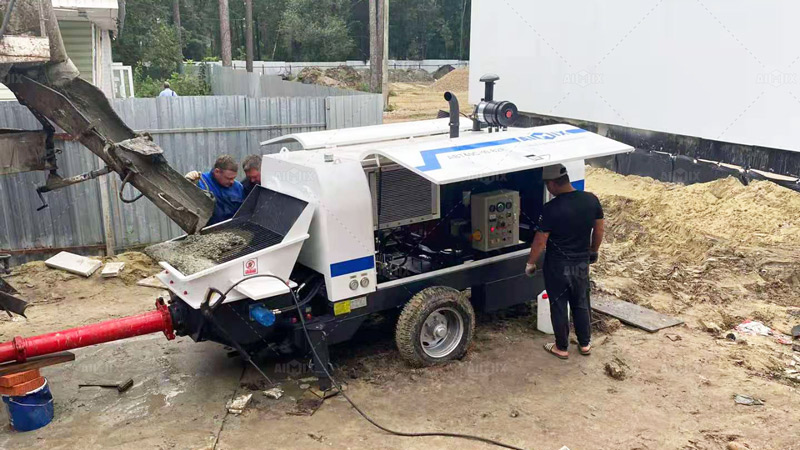Investing in a concrete pump can significantly enhance the efficiency and productivity of any construction project. Whether it's a trailer concrete pump or a stationary model, the initial concrete pump price might seem daunting. However, understanding the return on investment (ROI) can help you make an informed decision. This article will guide you through the process of calculating the ROI of a concrete pump to determine if it's worth the investment.
Introduction to Concrete Pumping
Concrete pumping is a method of transporting liquid concrete from the mixing plant to the construction site. It offers several advantages over traditional methods, such as using wheelbarrows or cranes. A concrete pump(AIMIX bomba de concreto precio) can save time, reduce labor costs, and increase the quality of the concrete placement. There are two main types of concrete pumps: trailer-mounted and stationary. Let's explore the factors that contribute to the ROI of each type.
Factors Influencing the ROI of a Concrete Pump
1. Concrete Pump Price
The initial concrete pump price is a significant factor in determining the ROI. The price can vary based on the brand, model, and features of the pump. It's essential to research and compare different options to find the best value for your investment.
2. Type of Concrete Pump
Trailer concrete pumps are mobile and can be easily moved between different job sites. They are suitable for smaller projects or jobs with multiple locations. On the other hand, stationary concrete pumps are more powerful and suitable for large-scale projects. The type of pump you choose will affect the ROI based on your project requirements.
3. Usage Frequency
The more frequently you use the concrete pump, the higher the ROI will be. Consider the number of projects you have lined up and how often the pump will be in use. If you have a steady stream of projects, the pump will pay for itself sooner.
4. Labor Costs
Concrete pumping can reduce labor costs significantly. With a pump, you'll require fewer workers to transport and place the concrete. This savings can contribute to a higher ROI.
5. Maintenance and Operating Costs
Maintenance and operating costs can impact the ROI of a concrete pump. It's essential to factor in these expenses when calculating the return on investment. Regular maintenance can extend the lifespan of the pump(bomba de concreto estacionaria) and keep operating costs low.
Calculating the ROI of a Concrete Pump
To calculate the ROI of a concrete pump, you'll need to consider the following formula:
ROI = (Net Profit / Initial Investment) * 100
Net Profit is the revenue generated from the concrete pumping service minus the operating costs, maintenance, and labor savings. The Initial Investment includes the concrete pump price, transportation, installation, and any additional costs.
Conclusion
Investing in a concrete pump, whether it's a trailer concrete pump or a stationary model, can offer significant benefits to your construction business. By considering the factors mentioned above and using the ROI formula, you can determine if a concrete pump is worth the investment. Careful planning, research, and analysis will help you make an informed decision that maximizes your return on investment.

Comments
January 4, 2025 11:14
Positive site, where did u come up with the information on this posting?I have read a few of the articles on your website now, and I really like your style. Thanks a million and please keep up the effective work. fototapeta dla dziecka
January 12, 2025 12:08
nedsfsddfs
Positive site, where did u come up with the information on this posting?I have read a few of the articles on your website now, and I really like your style. Thanks a million and please keep up the effective work. museumpass istanbul
April 3, 2025 14:52
This is very interesting content! I have thoroughly enjoyed reading your points and have come to the conclusion that you are right about many of them. You are great. esports lawyers